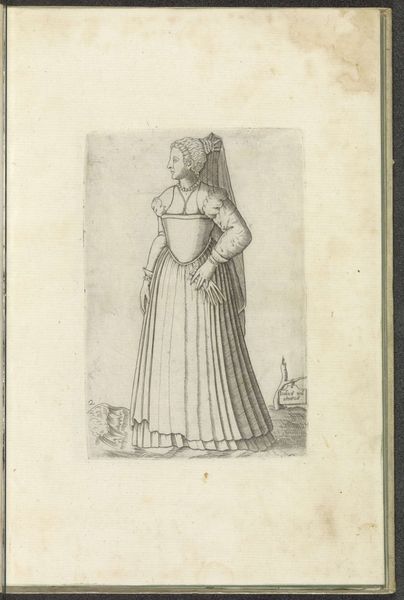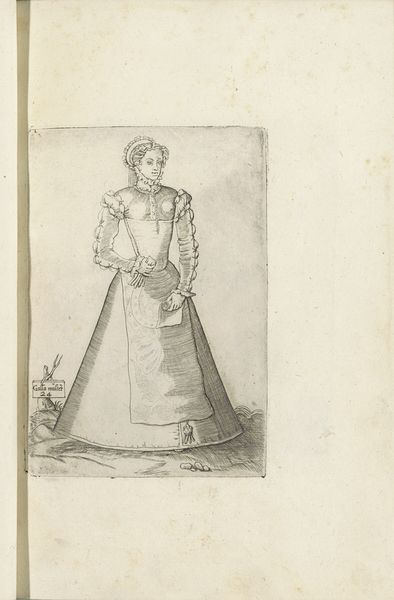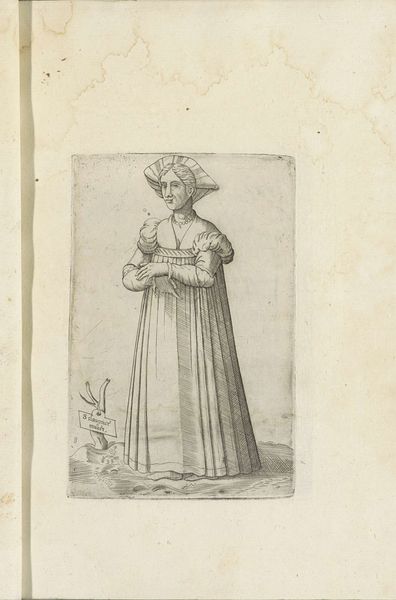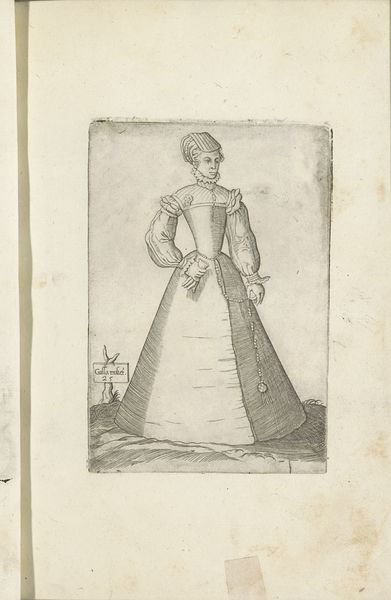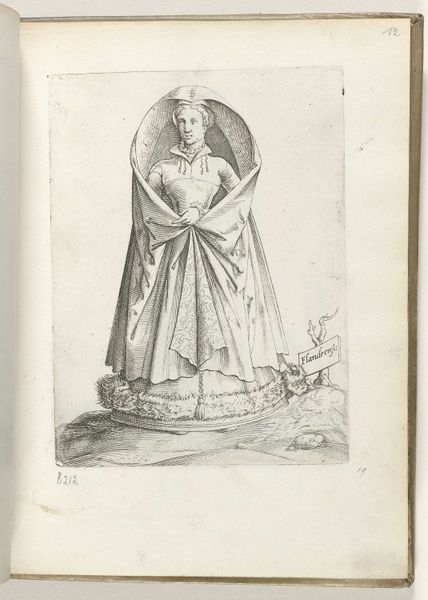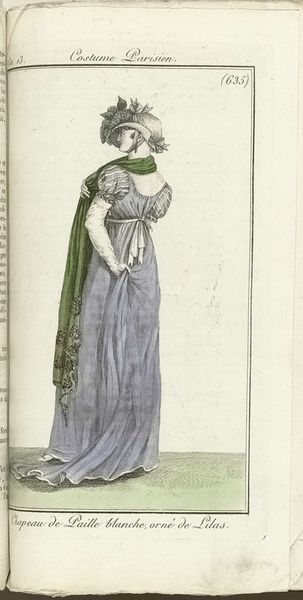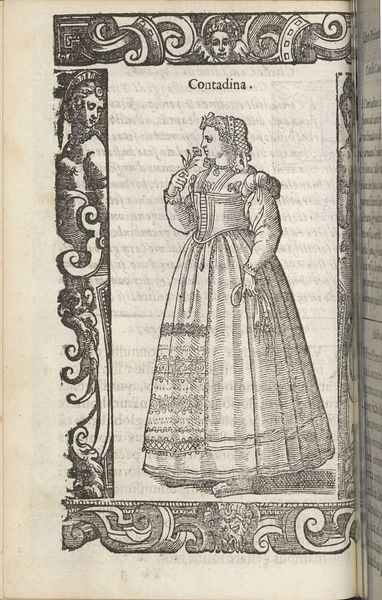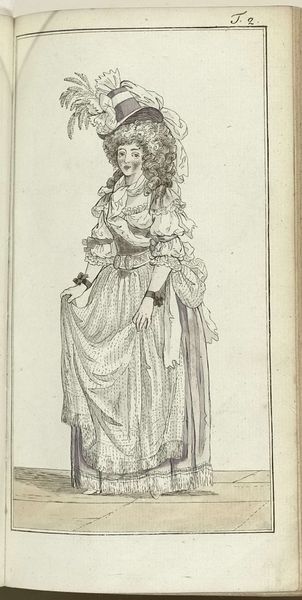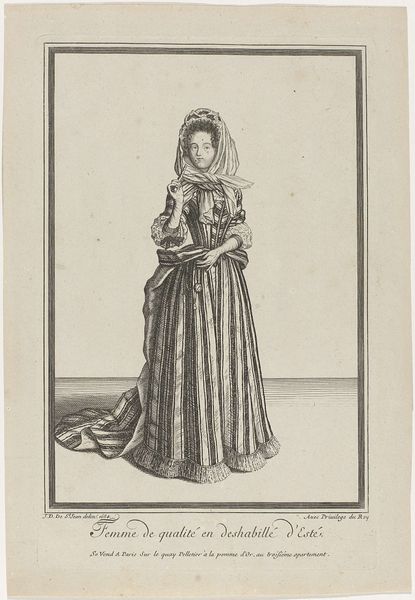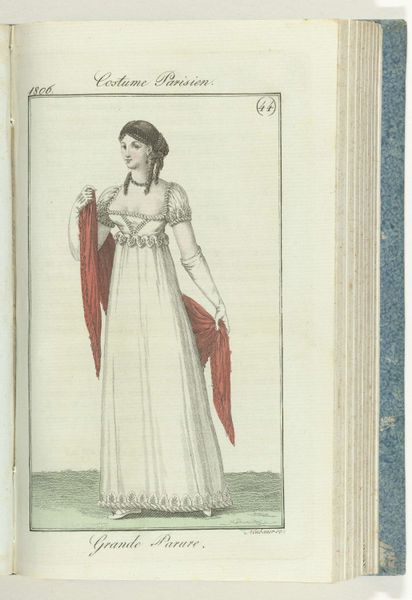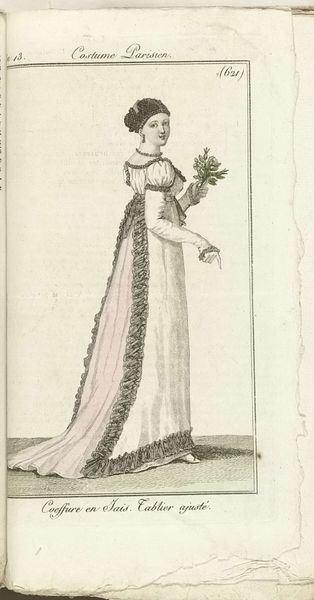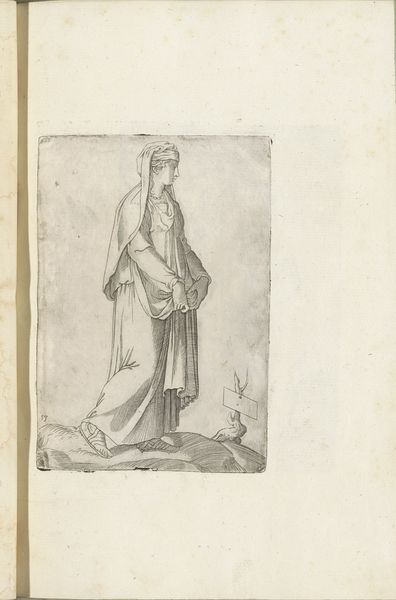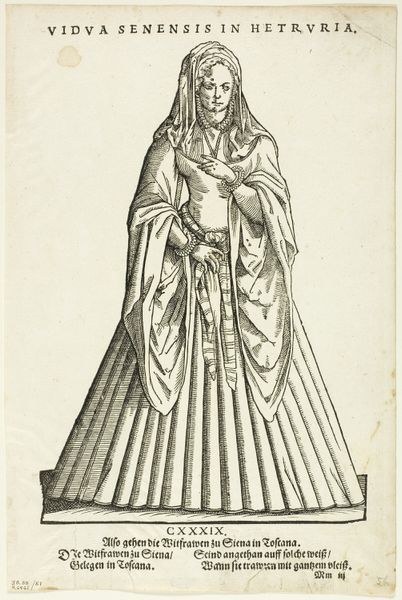
drawing, print, ink, engraving
#
portrait
#
drawing
# print
#
figuration
#
form
#
11_renaissance
#
ink
#
line
#
history-painting
#
italian-renaissance
#
engraving
Dimensions: height 265 mm, width 195 mm, height 150 mm, width 105 mm
Copyright: Rijks Museum: Open Domain
Curator: Here we have "Vrouw uit Rome," or "Woman from Rome," a work created in 1569 by Ferando Bertelli. It’s an engraving rendered in ink. Editor: The immediate impression is one of elegance and a somewhat austere formality. The lines are precise, creating a sense of restrained grandeur. Curator: It’s part of a series of prints depicting regional Italian dress. Notice the fine details, revealing social status through very specific visual cues. The layering of fabrics, for example, and the jewelry all speak volumes. It also reflects Rome as an intersection between history and contemporary cultural performance. Editor: Precisely! The way Bertelli uses line weight is really interesting. The thicker lines defining the contour give her form volume and presence, whereas the thinner lines used to define the drapery add detail without overwhelming the image. This shows how visual balance achieves social commentary. Curator: Yes, clothing during the Renaissance carried symbolic weight far beyond mere utility or decoration. Each garment, accessory, even the way they were worn, communicated social standing, marital status, and even moral virtues, real or aspired. This engraving gives us a peek into the semiotics of dress, particularly among Roman women of that era. Look at the object she holds—the muff is as performative as practical. Editor: And consider the printmaking technique itself! Engraving demands patience, deliberation. That meticulousness echoes, perhaps intentionally, the elaborate rituals surrounding appearance and social performance during that era. Even the subtle asymmetry created by the drape of her gown brings her forward from flatness to dimensional reality. Curator: This portrait becomes more than just an aesthetic exercise. It serves as an intriguing anthropological document—a freeze-frame of a specific moment in Roman cultural history viewed through the lens of dress and social expectations. It is part of what made Rome recognizable in Europe at the time. Editor: Agreed. Focusing on form draws you into the image, but appreciating the historical context gives it substantial depth. Both make viewing a meaningful engagement.
Comments
No comments
Be the first to comment and join the conversation on the ultimate creative platform.
